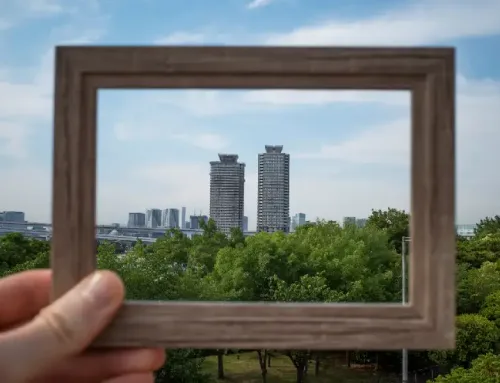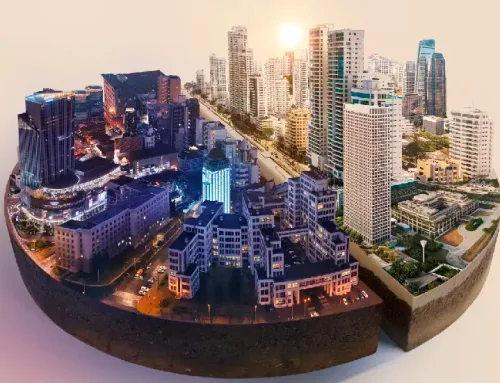Migration is as old as humanity itself. Globally, people have always moved in search of better lives and seeking opportunities. The Middle East, being a crossroads of civilizations, has its unique migration patterns shaped by socio-economic and political factors. Abu Dhabi isn’t merely a tourist attraction; it’s also a significant magnet for many migrant workers, making it a focal point in the global migration landscape. In this blog, we delve into the world of labour camps in Abu Dhabi and the stories that revolve around them.
Historical Perspective
Before the rise of the UAE’s iconic skyscrapers, the region was primarily known for its desert landscapes and a history of nomadic tribes and traders traversing its vast terrains. The 20th-century discovery of oil marked a significant turning point for the region, rapidly accelerating its development and necessitating a large workforce. To accommodate this surge of workers, the early labour camps were established. Initially simple in design and function, these camps have since evolved, reflecting Abu Dhabi’s growth and its changing socio-economic dynamics.
Labour Migration in Abu Dhabi
Abu Dhabi’s rapid development over recent decades has made it a beacon for migrant workers worldwide. Originally, the surge in labour migration was driven by the city’s burgeoning oil and infrastructure sectors. However, as Abu Dhabi expanded its economic horizons, delving into realms like tourism, finance, and real estate, the spectrum of its migrant workforce broadened. Today, the city hosts a diverse mix of professionals ranging from skilled engineers to service industry workers and construction personnel. The allure of Abu Dhabi goes beyond its iconic skyline; it offers competitive salaries and promising career trajectories, making it an attractive destination for those seeking better economic prospects.
Labour Camps: Infrastructure and Conditions
Labour camps in Abu Dhabi serve a distinct purpose: they are specialized accommodation arrangements designed specifically to house the city’s vast migrant workforce. These aren’t uniform structures; their infrastructure can vary widely. While some are equipped with modern amenities and designed to keep workers’ comfort in mind, others are more rudimentary, providing only the basic necessities. The variance in quality often leads to disparities in living conditions. Ideally, these labour accommodations in Abu Dhabi should offer a safe, comfortable environment for workers after their demanding workdays. However, concerns have been raised about certain camps where the conditions are less than satisfactory. In these instances, workers might grapple with issues like overcrowding, inadequate sanitation, and limited access to essential facilities. While many labour camps strive to ensure a decent standard of living, it’s evident that consistency across all camps remains a challenge.
Impacts of Labour Camps on Migrant Workers
Living within the confines of a labour camp in Abu Dhabi extends beyond the immediate physical surroundings; it encompasses several experiences, both physical and otherwise. Foremost among the concerns are health and safety. Due to the nature of their roles, many of these workers are exposed to considerable physical hazards, necessitating stringent safety measures. Yet, the challenges aren’t merely physical. The emotional toll of being separated from loved ones, adapting to a different cultural environment, and the strain of living in sometimes restrictive conditions can lead to significant social and psychological repercussions. Beyond these personal impacts, there are broader systemic issues at play. Navigating legal frameworks becomes crucial, especially when intersecting with fundamental human rights. Ensuring that these rights are upheld and that workers have avenues for legal recourse is paramount in any discussion about labour camp conditions.
Government Policies and Regulations
The UAE and Abu Dhabi governments have proactively shaped the landscape of labour accommodations in Abu Dhabi. Recognizing the centrality of migrant workers to the emirate’s development, a series of policies have been rolled out to regulate these accommodations. One such commendable reform is the Wage Protection System (WPS) introduced by the UAE Ministry of Labour. The WPS ensures that workers are paid their salaries promptly by mandating companies to process payments through approved financial institutions, addressing the long-standing issue of payment delays. However, while many initiatives have uplifted conditions, there remain areas of concern.
A prominent example is the “kafala” or sponsorship system, which ties a migrant worker’s immigration status to a specific employer or sponsor. This system has faced criticism for potentially fostering exploitative conditions by limiting worker mobility. Critics argue for a revamp of this policy to ensure greater rights and flexibility for workers. Addressing such concerns and continually pushing for improvements will be pivotal in ensuring the dignity and well-being of every migrant worker in Abu Dhabi.
Corporate Responsibilities and Labour Camps
Private corporations, as primary beneficiaries of the migrant labour force in Abu Dhabi, shoulder a significant responsibility when it comes to the well-being of these workers. Their role extends beyond mere employment, ensuring adequate living conditions in labour accommodations in Abu Dhabi. Progressive corporations have taken the lead, setting examples with initiatives rooted in corporate social responsibility (CSR). Such endeavours have improved living conditions and positively impacted workers’ morale and overall well-being. However, to truly make a difference, corporations should consider ethical standards like ensuring fair wages, providing safe working conditions, fostering open communication channels for workers to voice concerns, and offering opportunities for skill development and progression. By integrating these best practices into their operations, corporations can create a symbiotic relationship where both the business and its workers thrive.
International Perspectives and Comparisons
Labour accommodations are by no means exclusive to the city. Many nations around the globe feature similar setups, each adapting to its unique challenges and cultural contexts. A mosaic of commendable and questionable practices comes to light when we compare labour camps in Abu Dhabi with those in other countries. By delving into international best practices, we can uncover solutions that have proven effective elsewhere. For instance, certain countries emphasize stringent regulations on space per worker, ensuring no overcrowding. Others prioritize mental well-being, offering communal spaces and recreational facilities. Learning from such practices can provide valuable insights. By assimilating these lessons and tailoring them to Abu Dhabi’s specific needs, a path towards enhancing workers’ living conditions and overall experiences in the city’s labour accommodations can be charted.
As we wrap up this journey, one thing becomes clear – the migrant workforce and labour camps in Abu Dhabi are threads in the city’s intricate tapestry. Addressing the issues associated with labour camps isn’t just about infrastructure; it’s about humanity, rights, and dreams. With its vision and resources, the city has the potential to set benchmarks, emphasizing a comprehensive and humane approach to its migrant populace and the spaces they call home.





